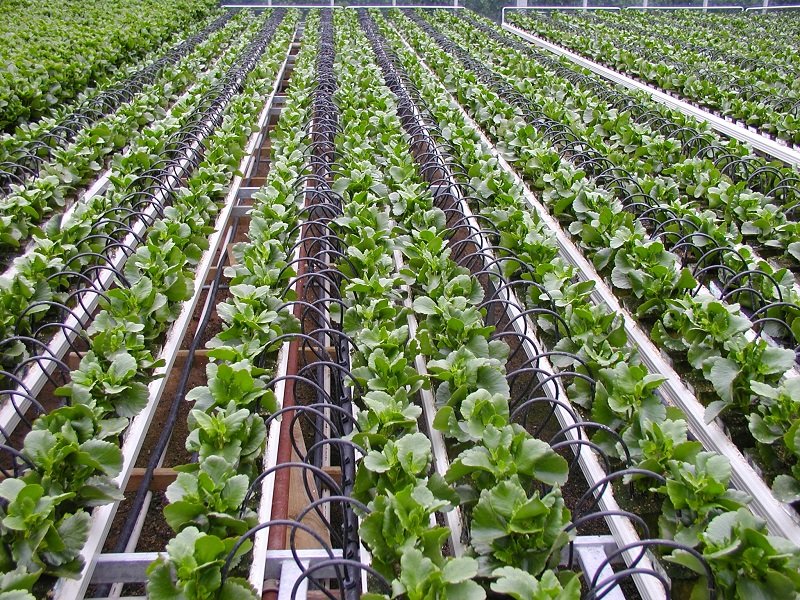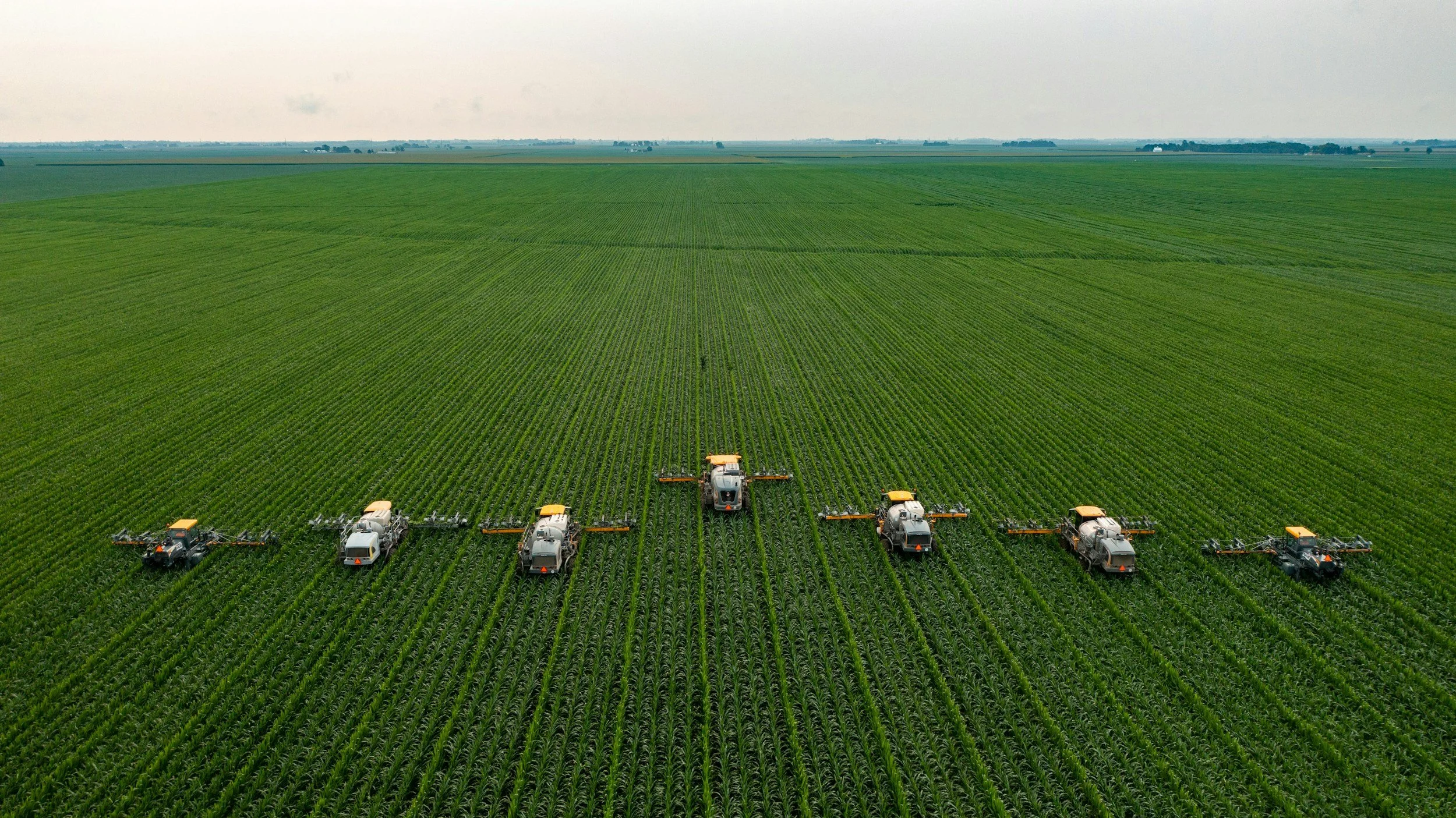Water Irrigation and Conservation Tips for Large-scale Farming
/In Australia, the United States, and the United Kingdom, agriculture accounts for a significant portion of water consumption, reflecting the vital role of farming in these economies. In Australia, agriculture uses approximately 70% of the country's total water resources, driven by the need to support extensive irrigation for crops and livestock. In the United States, around 80% of the country's consumed fresh water is allocated to agricultural activities, which is crucial for the production of staple crops and livestock. In the UK, agriculture is responsible for about 60% of total water use, although this figure may vary seasonally based on rainfall and crop demands.
Water shortages due to arid conditions and drought (Australia), rising temperatures and over-extraction of groundwater (US) and population growth, climate change and aging infrastructure (UK) have created sustainability challenges that require immediate attention and effective solutions.
These circumstances highlight the critical relationship between agricultural practices and water usage, emphasizing the importance of sustainable water management in ensuring food security across these nations. Water is the most essential farming resource, critical for ensuring the growth of crops and maintaining consistent soil moisture. However, to ensure optimal water usage, farmers have to learn how to balance maintaining the long-term viability of their production systems and promoting environmental sustainability. As such, they must implement various water irrigation and conservation techniques for the efficient and responsible use of this valuable resource. This article suggests some strategies many farmers can apply, particularly for large-scale operations.
Improve Water Distribution Processes
Uneven water distribution can lead to patches of overwatered or underwatered crops, resulting in reduced yields. As such, farmers have to enhance their water distribution processes to ensure better crop outcomes and more sustainable water use.
One solution they can consider is implementing a modular standpipe system. Thanks to its design, this type of standpipe system can be easily adjusted or expanded to meet specific needs of different sections of the farm. It also gives farmers greater flexibility and control over water distribution across larger areas. With a high-quality modular standpipe system in place, farmers can deliver water evenly across their fields while reducing the risk of waterlogged or dry areas.
Adopt Efficient Irrigation Systems
Irrigation is a crucial component in farming. With a well-designed system, farmers can greatly reduce water wastage and promote healthier plant growth. While traditional irrigation methods like flood irrigation are still an option, they often result in excessive water use and result in issues like soil erosion, waterlogging, and nutrient leaching. That’s why many farmers with large-scale operations are turning to modern irrigation systems, as they offer more controlled and precise water applications.
For instance, drip irrigation delivers water directly to the roots of plants through a network of pipes and emitters. This minimises evaporation and run-off, ensuring that plants receive the exact amount of water they need. On the other hand, centre-pivot irrigation systems move in a circular pattern, providing even water distribution across a large area. Due to their design, centre-pivot irrigation systems are particularly useful in circular fields.
Optimise Irrigation Scheduling
Proper irrigation scheduling is key to ensuring that crops receive the right amount of water at the right time. By knowing when to irrigate their crops, farmers can avoid over- or under-irrigating their crops, which enhances water conservation efforts while keeping crops healthy. An effective strategy is to base irrigation schedules on local weather data and forecasts. Farmers should also consider factors such as rainfall, temperature, and humidity, so they can adjust their watering times to coincide with periods when plants can absorb water most efficiently. They can also use weather-based controllers or smart irrigation systems to automate this process, ensuring that water is applied precisely when needed.
Another important aspect of optimising irrigation scheduling is to consider the crop’s growth stage, as different stages of plant development require varying amounts of water. For instance, the flowering and fruiting stages often demand more water than the early vegetative stages. Therefore, tailoring irrigation schedules to match these needs can prevent water stress during critical growth periods and avoid unnecessary watering when plants require less moisture.
Implement Water-Saving Techniques
As water resources become increasingly scarce, especially in arid and semi-arid regions, implementing water-saving techniques is essential to ensure the long-term viability of agricultural operations. Fortunately, there are several strategies that farmers can adopt to reduce water usage without compromising crop health and productivity. A simple but effective solution is mulching, which can significantly reduce evaporation from the soil surfaces. Applying a layer of organic or synthetic mulch around the base of plants works to retain soil moisture and thus reduce the need for frequent irrigation. Mulching can also help suppress the growth of weeds, which can compete with crops for water.
Planting cover crops is another technique farmers can apply. Implementing this strategy during the off-season helps to protect the soil from erosion, improves soil structure, and enhances its water-holding capacity. In addition to these benefits, cover crops contribute to soil fertility by fixing nitrogen levels and adding organic matter to the soil. Some cover crops can be planted alongside main crops for harvest, allowing farmers to achieve two goals at once.
Capture and Reuse Rainwater
Incorporating rainwater harvesting into large-scale farming operations is an effective way to enhance water conservation and reduce dependence on traditional water sources. Rainwater, a free and natural resource, can be captured and stored for later use, providing a supplementary water supply that can be particularly valuable during dry periods or in regions with limited water availability.
A common method used in large-scale farms is creating catchment basins and ponds. These can be designed to capture run-off from fields, which is then stored in ponds for later use. Not only does this practice help conserve water, but it also reduces soil erosion and the loss of valuable topsoil that usually occurs when rainwater runs off the land unchecked.
Sustainable Solutions for Farming
Implementing effective irrigation and conservation practices is essential for the sustainability and success of large-scale farming, as it directly impacts productivity, viability, and environmental health. Proper irrigation methods can ensure that crops receive the optimal amount of water, reducing waste and enhancing yield, while conservation practices minimize soil erosion and maintain nutrient levels. By adopting techniques such as drip irrigation, rainwater harvesting, and soil moisture management, farmers can optimize their water usage, increase resilience against climate variability, and contribute to the preservation of vital natural resources. This proactive approach not only boosts agricultural efficiency, but also fosters long-term sustainability, securing food supply for future generations.
About the Author:
Monica Mendoza is a content writer and marketing professional. She spends a lot of time studying how technology continues to transform lifestyles and communities. Outside the office, she keeps herself busy by staying up-to-date with the latest fashion trends and reading about the newest gadgets out on the market.








































